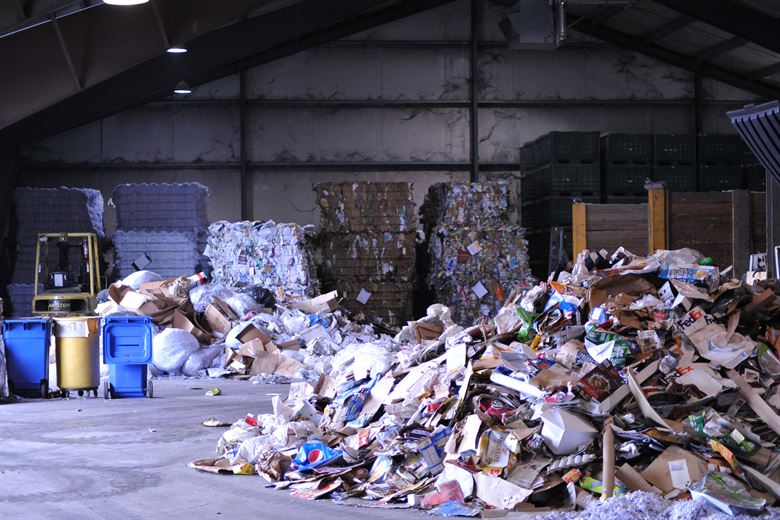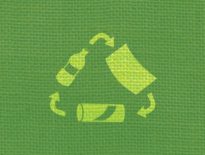ILSR’s Neil Seldman was recently interviewed by Waste Dive on cities and counties as the primary drivers of recycling market development. This is a follow up post containing additional information relevant to the interview.
Building Deconstruction in Baltimore
The city made two major non-profit deconstruction enterprises, It provided Second Chance warehouse space in downtown Baltimore in 2003 in exchange for the enterprise to fill all new jobs with low income, low skilled and hard to employ residents.. The company started with 6 deconstruction workers trained by ILSR and at the end of 2018 had 170 workers in its building take down and sales divisions, earning good wages and benefits. The company has a goal of helping 20% current trained workers get even better jobs. The company has 300,000 square feet of show rooms from which it sells recovered building materials as well as donations from building and furniture manufacturing companies.
The city also gave Humanim the rights to deconstruct 16,000 of abandoned houses owned by the city. (There are an estimated 40,000 vacant homes in the city.) Humanim started the Brick and Board enterprise to sell these recovered materials. This company employs 30 workers at present but has trained an estimated 200-250 workers in the past few years, helping them find union and non union jobs in the construction trades. Humanim reports that NONE of its workers who were returning citizens have gone back to prison; saving governments and private citizens millions of public dollars and making our cities safer. The US recidivism rate is 76%. “These businesses give building materials a second chance as well giving people a second chance that they are taking full advantage of,” states Mark Foster, director of Second Chance Baltimore. Electronic scrap deconstruction and repair enterprises such as HomeBoy Industries, In Los Angeles and RecycleForce in Indianapolis report similar low recidivism rates for their employees.
These enterprises keep tons of materials from landfills and incinerators and through sales of materials help homeowners and small contractors acquire valuable materials at low prices. They are critical to social, economic and environmental sustainability.
Urban Wood Recovery in Baltimore
Camp Small is a two-acre site in north Baltimore where the city processed fallen trees and storm debris. Branches and leaves are composted and used on city projects. The trees are processed for sale to the private wood manufacturers in the region. Most recently, the US Forest Service’s urban wood recovery program has provided funding for Baltimore’s Camp Small to acquire a kiln and milling equipment to add value to felled trees before they sell the logs to the private sector. The Camp Small enterprise was financed by a $98,00 loan from the city, which has already paid off in avoided disposal costs. There are plans to establish other ‘Camp Small sites in the city. The Forest Service take the program national wide.
Citizen Action and New Laws in the Mid Atlantic Focused on Organics in the Waste Stream
In the Mid Atlantic region citizens have impacted policies through new laws (the DC Solid Waste Management Reform Act, 2015) and their votes (Montgomery County, MD elected a new pro composting and anti incineration county executive). Both jurisdictions now are planning major expansions into recovering household organics for compost. Howard County, MD built its composting facility scaled to take material only from the jurisdiction. Prince George’s County, MD built its composting facility to accommodate materials coming from other jurisdictions.
Public concern for organics recovery and reuse infrastructure is also sparking investments across the US. The Rethink Waste program of the South Bay Waste Management Authority, San Mateo, CA issued $50 million in ‘green bonds’ to reach ‘zero organic waste to landfill’. Food scraps is the largest category of municipal solid waste that the county currently sends to landfills. The plan calls for a mixed waste processing facility to recover organic fractions and send them to a regional anaerobic digestion plant, the East Bay Municipal Utility District in Oakland.’ (The investment will also include a mixed paper high grading facility yielding a much higher recycling value.)
The Energy Justice Network, which has pioneered in establishing excellent recycling programs in low income, minority communities in Baltimore, is planning a new glass recycling enterprise with the help of the glass processing industry. Citizens in Arlington County, VA are similarly planning neighborhood-based programs to counter the government’s decision to halt glass recycling
The key to progress is local organizing among citizen organizations and small business networks.
The Beyond 34% program of the US Chamber of Commerce and its city funded projects can learn a great deal from ILSR’s technical reports on Beyond 25% Recycling, 1988, Beyond 40% Recycling, 1991, and Cutting the Waste Stream in Half: Communities Show the Way, 1999. See Record Setting Recycling and Composting Programs. One strategy for the cities working with the Chamber of Commerce Foundation, The Closed Loop Fund and the Recycling Partnership is to replicate the US EPA peer matching program which connected city managers that are beginning to expand their recycling efforts with city managers who have successful built their programs to reach 50%, 60% and 70% recycling levels.
Photo Credit: Mary Allen via Air Base Wing Public Affairs





